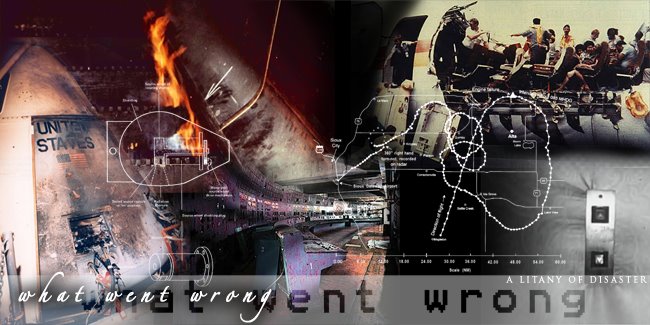Living as I do in the outskirts of Baltimore’s thriving crack district, I hear a lot of sirens. In fact I am rather inured to the sound of sirens after four years of
WHOOOOOOooooooooooOOOOOOOOOOOOoooooooooooOOOOOOOOOO BRAAAAAAAAAA BRAAAAAAAAAA WEEEEEOOOoooooooOOOOOOooooo
but I always sort of wondered what actually made that noise, and how, and if it was really the same as the air-raid sirens you hear in old movies. I don’t know if any of you have looked into the world of sirens, but there’s a corollary to the law of if-it-exists-there-is-porn-of-it: if it exists, there is a small and deranged cadre of people who collect it for purely nonsexual reasons. Good examples of this include vacuum tubes, power-line insulators, and the whole spectrum of the siren family from horns and whistles all the way up to the most ridiculous noisemaker of them all, about which more later.
There are two sorts of siren, for most purposes, and the fire trucks that go under my window multiple times per evening (WHOOOOoooooooooooooOOOOOOOO BRAAAAAAAAAA BRAAAAAA) are equipped with the pneumatic type, plus an air horn, while the police cars (NNEEEEEEEEEEEEEEEEEEEEEEEEEEEeeeeeeeeeeeeEEEEEEEEEEEEEEEEEEEEeeeeeeeeeeeeEEEEEEEEEEE WOOP WOOP EEEEEEEEEEEE) have electronic sirens. The electronic ones can replicate the wail of a pneumatic siren but have a much tinnier sort of noise, higher and more nasal than their mechanical cousins.
Pneumatic sirens work on a principle so simple it’s funny. Sound is perceived as the result of air pressure variations hitting our little tiny delicate eardrums and billowing them in and out, so anything that causes a regular disturbance in airflow will make noise, viz. blowing raspberries. That is in effect what happens when you spin up a pneumatic siren. An impeller fan (rotor) turns inside a slotted housing (stator), sucking air in and blowing it out again through the slots in the stator drum. As the rotor turns, it chops the air-stream coming out of the stator slots into regular bursts. Each time the rotor and stator holes align, a burst of air is forced through. The frequency of these bursts is the pitch of the siren. The alternating pressure wave propagates through the air and drives everybody nuts unless they’ve lived on Lombard Street and have learnt to ignore sirens for the most part.
These are the sirens you will be familiar with from the war films, the mournful minor-third wail of the British Carter air-raid siren and the single tone of the US Federal Thunderbolt. They take a lot of power to spin up to their maximum RPM/pitch, but can do this quickly; there’s no brake on the shaft, so once power is cut off it takes a long time for the siren to spin down out of audio frequency. You’ll notice this next time you hear a fire-truck or a volunteer-firehouse siren spin down: it sounds thoroughly desolate and discouraged. WOOOOOOOOOOooooooooooooooooooooooooooooooooooooooooooooo.
Both the Carter and the Federal are dwarfed by the apotheosis of all sirens, the ridiculous, majestic, and rather scary Chrysler Air Raid Siren. VictorySiren.com has a lot more information about this behemoth, but I shall outline a few of the more salient details for you, because it is just absolutely unbelievable:
This siren is powered by a 180-hp V8 hemi from Chrysler’s industrial engine line. It runs a compressor capable of pushing 2610 cubic feet of air a minute through a rotor spinning at a maximum of 4600 rpm and forcing it out of its six aluminum throats at four hundred miles an hour. Under optimum conditions it can be heard more than thirty miles away. At one hundred feet from the monster its output is 138 dB. It is the loudest sound signaling device ever built. It is also the size of a car and weighs over five thousand pounds.
Looking at the Chrysler siren and listening to clips of it being run is looking into another era. I can’t think of another object that exemplifies the American approach to the Cold War: it’s huge, massively powerful, well-designed, and completely paranoid.
And I want one.
Image credits: airraidsirens.com & Anthony Pollard on airraidsirens.com
Monday, June 8, 2009
Subscribe to:
Post Comments (Atom)

The funny thing is that the instant I read "the most ridiculous noisemaker of them all" I knew you were referring to the Chrysler Air Raid Siren.
ReplyDeleteIt's good, isn't it? I really, really want one. Preferably on tank tracks.
ReplyDelete